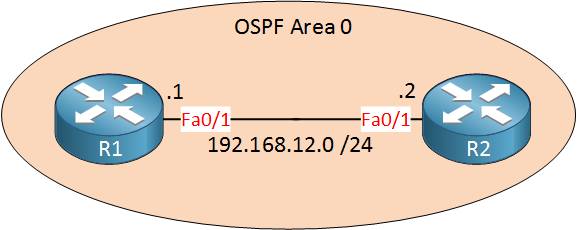With OSPF, it is no problem to configure a default route. There are a couple of options if you want to do this. Here’s an example:

R1(config)#router ospf 1
R1(config-router)#default-information originate ?
always Always advertise default route
metric OSPF default metric
metric-type OSPF metric type for default routes
route-map Route-map reference
<cr>There are a number of things. We can change the metric or metric type, but the most important thing most people forget is the always keyword.
If you use the default-information originate command, you can advertise a default route in OSPF. OSPF won’t advertise a default route if you don’t already have it in your routing table. If you add the always keyword, it will advertise the default route even if you don’t have it in the routing table. Once you have advertised the default route, it will look like this on other routers:
R2#show ip ospf database | begin Type-5
Type-5 AS External Link States
Link ID ADV Router Age Seq# Checksum Tag
0.0.0.0 172.16.3.1 59 0x80000001 0x008D64 1
R2#show ip route ospf
O*E2 0.0.0.0/0 [110/1] via 192.168.12.1, 00:00:24, FastEthernet0/0It will show up as an LSA type 5 external route.


What is the use case for this..?
BR,Srini
A good example would be a small network where one router has an Internet connection. You can advertise the default route to all routers in the network.
Rene,
Great lesson I have a question in my lab I have 3 routers
R1---- 192.168 1.0---- R2
R2-----192.168.2.0 ----R3
I am advertising default route on R2 but I can not ping 192.168.2.3 from R1.
R1 can see a default route O*E2 0.0.0.0/0 [110/1] via 192.168.1.2, 00:08:46, FastEthernet0/0.
Please let me know.
Thanks
Hamood
Hi Hamood,
R1 knows the default route so we can assume that the packet makes it from R1 to R2. Since 192.168.2.0 is directly connected to R2, it knows how to reach R3 (192.168.2.3). What about the return traffic?
Does R3 also have the default route in its routing table or is there anything preventing it from responding to R1?
Rene
Hi Rene
I have a couple of questions. Why this is sent as a Type 5 LSA even when the R1 and R2 routers are in same area. I guess since this is a Type 5 LSA it shows as an O*E2 ( External with Metric 2, so the actual cost of R1 to R2)
Thanks
Palani